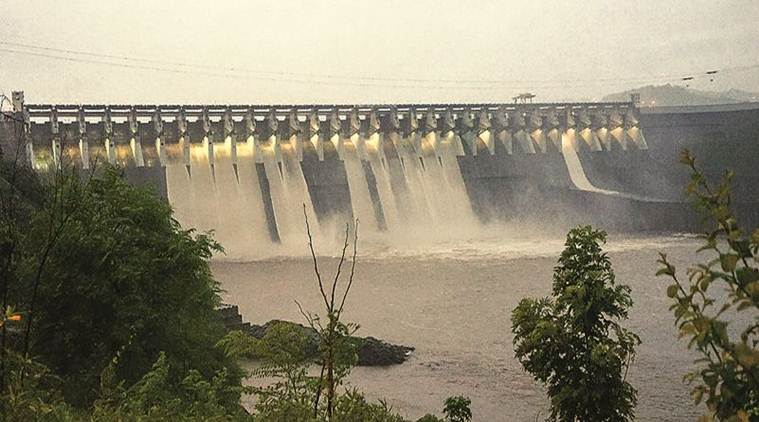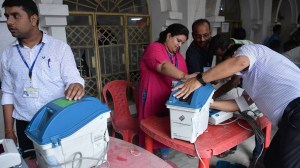- India
- International
Narmada’s Riverbed Powerhouse on after two years, now at full capacity
The RBPH last generated about 3,76,000 MW power between April and June 2017 and was completely shut the following year.
 Narmada Dam’s RBPH has generated 7,45,000 megawatts of electricity. (File)
Narmada Dam’s RBPH has generated 7,45,000 megawatts of electricity. (File)
Since August 10 this year when the Riverbed Powerhouse (RBPH) of the Sardar Sarovar Narmada Dam turned functional, it has generated 7,45,000 megawatts of electricity, operating at full capacity after a gap of two years. With a steady inflow of water into the reservoir at an average of 5 lakh cusecs owing to heavy rains, the powerhouse has been able to restart operations.
The RBPH, which runs on six reversible turbines of a capacity of 200 MW each and a total installed capacity of 1,200 MW. According to available data, the RBPH generated 6,06,490 MW power from August 10 to 31 and about 1,37,600 MW power since September 1. Officials said that the good rainfall in the catchment areas, combined with the release of water from Madhya Pradesh, following the generation of power in its own hydro-power station at Indirasagar, has helped ensure that the water level in the reservoir of the Narmada Dam remains above 133 metres, thereby keeping the RBPH functional.
In addition to the RBPH, the Canal Head Power house (CHPH) has generated a total of about 98000 MW of electricity since August 10 this year.
The RBPH last generated about 3,76,000 MW power between April and June 2017 and was completely shut the following year. The highest power generation from the RBPH was in from April 2013 to March 2014 at 52,16,800 MW power.
The RBPH is an underground power house stationed on the right bank of the river, located about 165 metres downstream of the dam. It has six number of Francis-type reversible turbine generators each of 200 MW installed capacity. These units can operate at a minimum reservoir water level of 110.64 meters.

The CHPH, on the other hand, is a surface power station in a saddle dam on the right bank of the reservoir having a total installed capacity of 250 MW (5 x 50 MW).
The CHPH is operated regularly in consultation and as per advice of NCA/WREB based on irrigation requirement of Gujarat/Rajasthan and availability of water in the reservoir and release from the upstream project of Madhya Pradesh.
The energy generated from both the power houses is shared by Gujarat, Maharashtra and Madhya Pradesh in the proportion of 16:27:57.
The generation of energy from RBPH, however, depends upon inflow of water from upstream projects and need of water for irrigation in Gujarat. While the RBPH has been shut since June 2017 due to rain deficit and low level of water in the reservoir for two consecutive water years, the SSNNL was required to operate the powerhouse this year as the reservoir crossed 133 metres in August. The dam is currently at 136 metres, just about three metres shy of its Full Reservoir Level (FRL), which the SSNNL is aiming to achieve for the first time since the height of the dam was raised and gates installed in 2017.
Earlier in April this year, the SSNNL had also requested the Narmada Control Authority to allow Gujarat to bypass the mandatory provision to restart the RBPH even if the water crosses 133 metres so as to be able to fill the dam to its FRL level for the first time since the completion of its construction.
Apr 19: Latest News
- 01
- 02
- 03
- 04
- 05






































